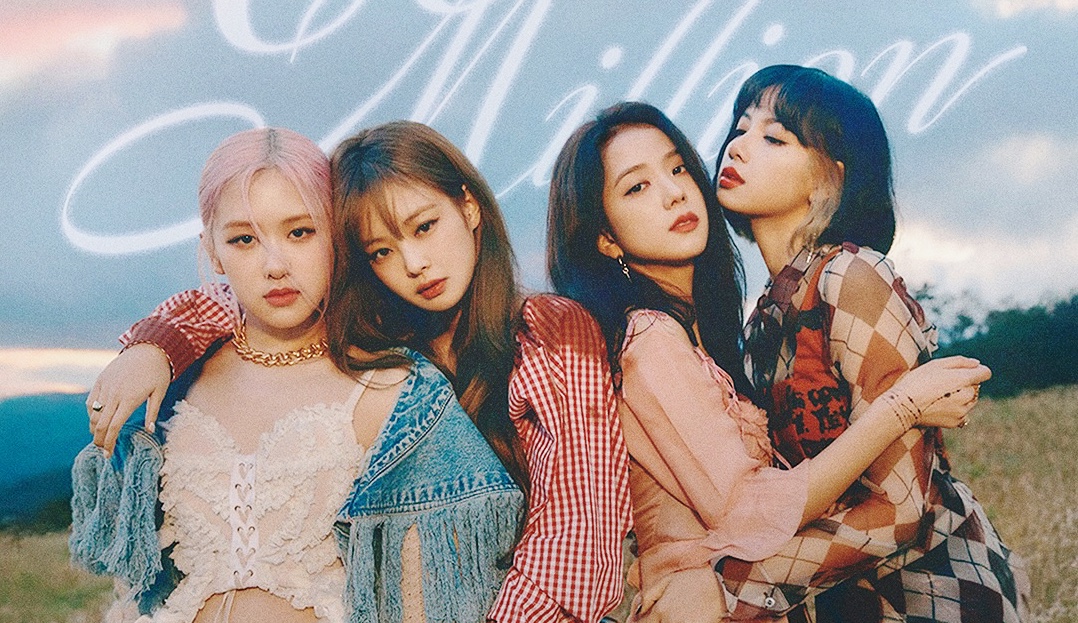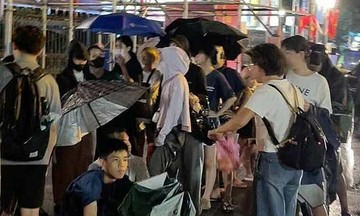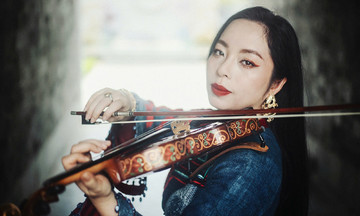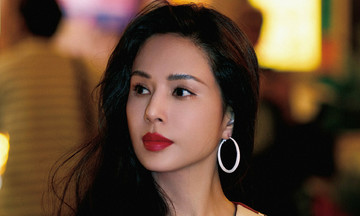Writing for Dailian, Lee Ye Joo points out that there was a time when large girl groups (8-9 members or more) were the norm in k-pop – a market known for its fierce competition and fleeting fame. From 2007 – when the nine-member girl group SNSD debuted – the wave of large girl groups gradually blossomed, notably with After School (which constantly adjusted its member count), Nine Muses, Twice (nine members), and Lovelyz (eight members).
Between 2015 and 2019, k-pop witnessed the debut of WJSN (13 members), Gugudan, Pristin, Fromis_9, Momoland (nine singers), and AOA (eight members). Besides talent, visual appeal was considered an advantage in captivating fans.
 |
SNSD debuted in the Korean entertainment industry in 2007, with 9 members: Yoona, Jessica, Tae Yeon, Tiffany, Soo Young, Hyo Yeon, Sunny, Yuri and the youngest Seo Hyun. In 2014, Jessica left the group. Photo: SM |
However, in the 2020s, this model has significantly declined. Only a few notable large groups debuted, such as Chic&I's, Kep1er (nine members), the AI group Eternity (11 members), and tripleS (24 singers). Of these, Chic&I's disbanded in 7/2022, and Kep1er downsized to seven members when Mashiro and Kang Yeseo did not renew their contracts.
Conversely, the number of smaller girl groups with around 4-5 members has increased sharply. 2020 saw the debut of 14 groups, seven in 2021, 10 in 2022, approximately 11 in 2023, and a record 17 in 2024. At least eight groups have debuted in the first half of this year, including KiKi and Baby Don’t Cry. Entertainment company founders suggest the current k-pop trend favors streamlined groups with higher individual talent, where each member stands out yet blends into the whole.
Korean experts believe large groups are losing ground, and this shift stems from multiple factors. According to Dailian, in the past, one standout member could elevate the entire group. For example, AOA gained popularity with hits like "Short Skirt," "Like A Cat," and "Heart Attack" thanks to Seolhyun's charisma, while Momoland's "BBoom BBoom" and "Baam" exploded when JooE's stage presence became a hot topic. But now, with fiercer competition among girl groups, overall success is harder to achieve through individual popularity. Consequently, entertainment companies are more cautious about investing in large groups.
Operational costs are another significant burden. Basic investments like accommodation, costumes, hair, makeup, content production, and promotion increase exponentially depending on the number of members. Managing a large group is also complex, from arranging formations to dividing song lyrics and choreography.
 |
TripleS debuted in 2022 and is currently the largest K-Pop girl group with 24 members. Photo: Modhaus |
At the Assemble 24 showcase in 5/2024, Na Kyung (tripleS) explained that with so many members, everyone has to wake up very early for morning schedules. They divide into smaller groups, taking turns with hair and makeup. "One day I had to leave the dormitory at 1 a.m.", Na Kyung said.
TripleS still believes there are advantages to being a large group, like experimenting with various concepts and diversifying their musical range. However, this requires the group to split into sub-units. This leads to another limitation: not every member gets equal opportunities to shine. Members less frequently chosen for sub-units are easily sidelined or remain unrecognized by the public.
Within tripleS, while Kim Yoo Yeon has worked with six sub-units and Lee Ji Woo with five, others have appeared in only one or two (like Shinwi, Kaede, Seo Ah, and Seol Rin). Many members lack opportunities to showcase their talents, leading to disparities in recognition, with some being forgotten by the audience.
Furthermore, an expert from Yonhap News points out that globalization is a general trend. When targeting international markets, companies increasingly favor smaller groups – easier to manage and better suited for building international fandoms, especially with the growing popularity of multilingual content and multinational members.
Indeed, many groups of 4-5 members have gained international traction. Blackpink is considered a successful model for modern girl groups. Active for over nine years, the group has become YG's "golden goose." Their releases consistently create a global buzz, most recently with the hit "Jump." Individually, Lisa, Jennie, Rose, and Jisoo have all established global influence in music and fashion.
 |
Blackpink. From left: Rose, Jennie, Jisoo, Lisa. Photo: YG |
Other notable four-member groups include aespa and Mamamoo. The Korea Times also highlights Fifty Fifty and H1‑Key as four-member groups that made a splash upon debut. With "Cupid," Fifty Fifty achieved the fastest Billboard Hot 100 entry in k-pop history. "This demonstrates that quality over quantity prevails and smaller groups can still achieve international reach," the newspaper states.
Dailian quotes a representative from a Korean entertainment company: "Audiences now value idols for their live singing and stage presence. Instead of focusing on increasing numbers, we want to invest in depth, helping groups showcase uniformity and a distinct musical style, which is both cost-effective and strategically sound."
Thien Lam (According to Dailian)











